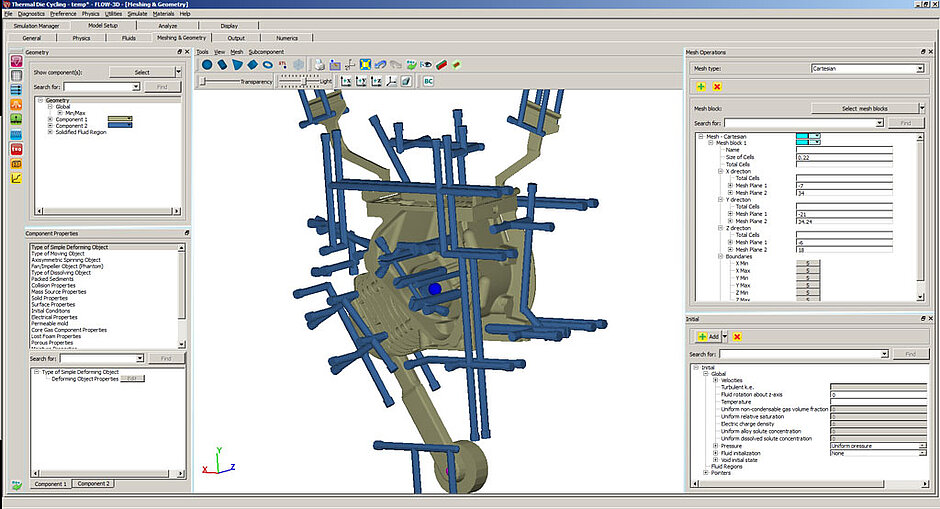Flow Science, Inc. announces the availability of a new release of its computational fluid dynamics software, FLOW-3D, known for its high level of accuracy and large physical model library that serves a broad range of industries. FLOW-3D version 10.1 features a redesigned graphical user interface. The new design, which was based on significant customer input, gives users a streamlined approach to setting up, running and analyzing simulations. On the solver side, developments include new hybrid shallow water/3D flow, cooling channels and spray models and significant enhancements to the fluid structure interaction/thermal stress evolution and general moving objects models. The results file size has been substantially reduced to help users better handle and store their simulation data.
The hybrid shallow water/3d flow model is especially useful for civil and environmental applications. Large sections of rivers and coastal areas can be modeled using the very efficient depth-averaged (shallow water) equations, while structures like piers, spillways, and overflows can be modeled with the full 3-D Navier-Stokes equations. This allows users to set up approach conditions to 3-D structures rapidly, and to model complex networks of channels and diversions.
“The driving force behind the redesign of the GUI was to help our users increase their productivity by making it easier for them to unleash the power of FLOW-3D’s solver. Some of the ways we’ve addressed this is by making the interface customizable so that users can set their own preferences, including dockable windows, a redesign of the Meshing and Geometry window where users spend most of their time, and a simulation queue manager that allows for easy management of simulations. We will continue our focus on creating the best user experience possible with the upcoming integration of EnSight into FLOW-3D, which will give our customers the best-in-class post-processing software to better analyze, visualize and understand their simulation results,” said John Ditter, Flow Science’s Vice President of Software Engineering.
Key models and improvements to the solver and GUI include:
- Hybrid Shallow Water/3D Flow Model
- Spray Cooling Model
- Plastic Deformations in the FSI/TSE Models
- Cooling Channels Model
- Enable Moving Objects to be porous materials
- Simulation Queue Manager
- Redesigned Meshing & Geometry tab
###COMPANY_LINK### <link record:tx_browserdirectory_directory:4896 internal-link>![]() Flow Science Inc.
Flow Science Inc.


